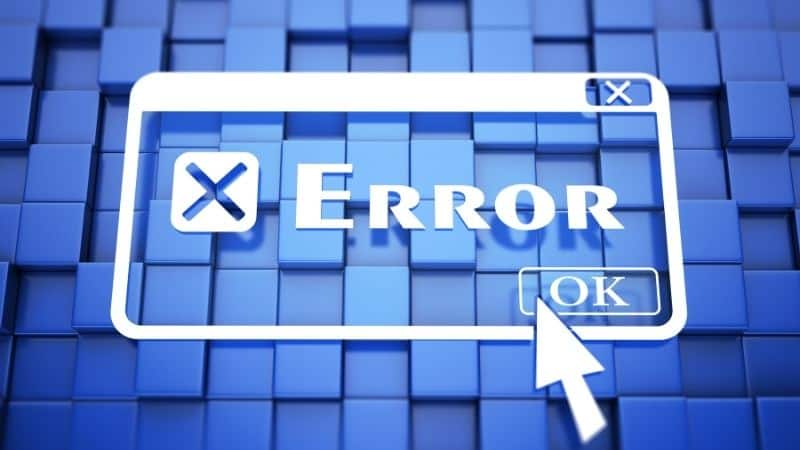Last Updated on
If you have been interrupted by the PAGE_FAULT_IN_NONPAGED_AREA error message, you’re probably feeling frustrated and wondering what it means.
After all, this error screen often seems to come out of nowhere, leaving PC users at a loss for how to get rid of it.
There are a few different causes of the PAGE_FAULT_IN_NONPAGED_AREA error and also some different methods of fixing the problem.
Error Code Variations
PAGE_FAULT_IN_NONPAGED_AREA is often referred to as a BSOD error – a Blue Screen of Death.
Over the blue screen, you may see the code PAGE_FAULT_IN_NONPAGED_AREA, page_fault_in_nonpaged_area, or the alphanumeric code 0x00000050. All of these codes are for the same error.
Causes Of PAGE_FAULT_IN_NONPAGED_AREA
If any of the above codes appear over a blue screen while you’re using your PC, it’s because the computer has referred to a memory that is invalid.
The memory address might be incorrect, or the memory may be discharged. Regardless, what this means is that your system can’t access specific software or data in the RAM, and data in the Page file can’t be located by the OS.
The result is an annoying blue screen and confusing error code.
It has been noted that PAGE_FAULT_IN_NONPAGED_AREA or 0x00000050 is an error that tends to occur when systems are running on older versions of Windows 7, Windows 8 and 8.1, Windows Vista, and Windows XP.
How To Fix PAGE_FAULT_IN_NONPAGED_AREA
There are several fixes you can try to stop the BSOD from appearing with this specific error code.
Step
1st Fix
The first method you should try is uninstalling, updating, or rolling back your display or audio drivers.
You can often do this automatically using a tool such as DriverFix. Alternatively, you can replace parts of your PC manually.
To rollback, go into Device Manager, open Display Drivers or Sound and Video and Game Controllers, and right-click the relevant drivers.
Once you have done this, choose Properties and select the Driver tab. ‘Roll Back Driver’ should appear as an option. Click ‘yes’ after choosing the reason for your rollback and then reboot the system.
Updating your drivers involves right-clicking the Start button and choosing Device Manager. Find the diver in the display adapters menu and right-click this to select ‘Update Driver’.
You should get the option to ‘Search Automatically for Updated Driver Software’. Once Windows has installed all the updates, reboot.
To uninstall drivers, enter Device Manager and pick ‘Sound, video, and game controllers / Display’. Once you have expanded this menu, select the driver, right-click on it, and click ‘uninstall’.
Step
2nd Fix
If the above doesn’t work, you can try disabling the automatic page file size management function.
Click E and the Windows logo simultaneously. This opens File Explorer. Find This PC, right-click, and select ‘Properties’.
In Advanced System Settings, you will find Performance. In this section, click Settings, then Advanced. Click ‘Change’.
Deselect ‘Automatically manage paging file size for all drives’, select OK, and then restart.
Step
3rd Fix
The Windows Memory Diagnostics tool might be able to help you get rid of the error.
In the Start menu, input ‘Memory’ into the search bar. Choose ‘Windows Memory Diagnostics’ and ‘Check my computer’s memory problems’. Scan results will be available in System Log – Event Viewer.
Step
4th Fix
Non-Microsoft applications might be causing the error, so you can try disabling these.
Put ‘msconfig’ into the search bar and choose System Configuration. Open it, enter the Services tab, and disable any that are not from Microsoft.
If this solves the problem, you can try re-enabling all services one at a time so see which one is the culprit.
Step
5th Fix
Old versions of Windows are sometimes responsible for the error code, meaning that updating your system could resolve the issue.
In the Search bar, input ‘check for updates’. Select the option and let the system look for updates. For any that come up, select ‘Install Updates’.
Step
6th Fix
Disable your anti-malware software temporarily to see if it is causing the BSOD by being incompatible with your system.
Final Thoughts
Thank you for consulting our guide to stopping the PAGE_FAULT_IN_NONPAGED_AREA BSOD.
If none of the above steps are successful, we recommend using an optimization tool such as Reimage to diagnose system issues and recover any lost data.



